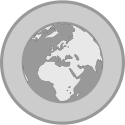Woo Sang-hyeok
 Woo Sang-hyeok, Bhubaneswar 2017 | ||||||||||||||||||||||||||||||||||||||||
| Data i miejsce urodzenia | ||||||||||||||||||||||||||||||||||||||||
|---|---|---|---|---|---|---|---|---|---|---|---|---|---|---|---|---|---|---|---|---|---|---|---|---|---|---|---|---|---|---|---|---|---|---|---|---|---|---|---|---|
| Dorobek medalowy | ||||||||||||||||||||||||||||||||||||||||
| ||||||||||||||||||||||||||||||||||||||||
Woo Sang-hyeok (kor. 우상혁, ur. 23 kwietnia 1996 w Daejeon) – południowokoreański lekkoatleta specjalizujący się w skoku wzwyż.
W 2013 został mistrzem świata juniorów młodszych, a rok później stanął na najniższym stopniu podium juniorskich mistrzostw świata w Eugene. Złoty medalista mistrzostw Azji w Bhubaneswar (2017), złoty medalista halowych mistrzostw świata w Belgradzie (2022). Srebrny medalista mistrzostw świata w Eugene (2022).
Rekordy życiowe: stadion – 2,35 (1 sierpnia 2021, Tokio oraz 19 lipca 2022, Eugene); hala – 2,36 (5 lutego 2022, Hustopeče). Oba rezultaty są aktualnymi rekordami Korei Południowej.
Osiągnięcia
| Rok | Impreza | Miejsce | Pozycja | Wynik |
|---|---|---|---|---|
| 2013 | Mistrzostwa świata juniorów młodszych | 2,20 | ||
| 2014 | Mistrzostwa świata juniorów | 2,24 | ||
| Igrzyska azjatyckie | 10. miejsce | 2,20 | ||
| 2015 | Mistrzostwa Azji | 10. miejsce | 2,10 | |
| Uniwersjada | 5. miejsce | 2,24 | ||
| 2016 | Halowe mistrzostwa Azji | 12. miejsce | 2,10 | |
| Igrzyska olimpijskie | el. – 22. miejsce | 2,26 | ||
| 2017 | Mistrzostwa Azji | 2,30 | ||
| Mistrzostwa świata | el. – 25. miejsce | 2,22 | ||
| Uniwersjada | 8. miejsce | 2,20 | ||
| 2018 | Igrzyska azjatyckie | 2,28 | ||
| 2019 | Mistrzostwa Azji | 7. miejsce | 2,19 | |
| 2021 | Igrzyska olimpijskie | 4. miejsce | 2,35 | |
| 2022 | Halowe mistrzostwa świata | 2,34 | ||
| Mistrzostwa świata | 2,35 |
Bibliografia
- Woo Sang-Hyeok, [w:] tilastopaja.eu [online] [dostęp 2013-09-23] (ang.).
- Profil zawodnika na stronie World Athletics (ang.) [dostęp 21 marca 2022].
Media użyte na tej stronie
Pictograms of Olympic sports – . This is an unofficial sample picture. Images of official Olympic pictograms for 1948 Summer Olympics and all Summer Olympics since 1964 can be found in corresponding Official Reports.
Autor:
- Gold_medal_world_centered.svg by Maix
- derivative work: Mboro (talk)
A gold medal with a globe icon
The flag of Navassa Island is simply the United States flag. It does not have a "local" flag or "unofficial" flag; it is an uninhabited island. The version with a profile view was based on Flags of the World and as a fictional design has no status warranting a place on any Wiki. It was made up by a random person with no connection to the island, it has never flown on the island, and it has never received any sort of recognition or validation by any authority. The person quoted on that page has no authority to bestow a flag, "unofficial" or otherwise, on the island.
Autor:
- Bronze_medal_world_centered.svg by Maix
- derivative work: Mboro (talk)
A bronze medal with a globe icon
The Flag of India. The colours are saffron, white and green. The navy blue wheel in the center of the flag has a diameter approximately the width of the white band and is called Ashoka's Dharma Chakra, with 24 spokes (after Ashoka, the Great). Each spoke depicts one hour of the day, portraying the prevalence of righteousness all 24 hours of it.
Chinese Taipei Olympic Flag. According to the official website of Chinese Taipei Olympic Committee, Blue Sky(circle) & White Sun(triangles) above the Olympic rings is neither the National Emblem of the Republic of China, nor the Party Emblem of Kuomintang (KMT), but a design in between, where the triangles do not extend to the edge of the blue circle, as registered at International Olympic Committee in 1981 and digitally rendered in 2013. Besides, the blue outline of the five-petaled plum blossom is broader than the red one. Moreover, the CMYK code of the blue one and the Blue Sky & White Sun is "C100-M100-Y0-K0", and different from the Olympic rings (C100-M25-Y0-K0). Note that it's the only version recognized by IOC.
bendera Indonesia
Autor:
- Silver_medal_world_centered.svg by Maix
- derivative work: Mboro (talk)
A silver medal with a globe icon
Autor: Athletics Federation of India, Licencja: CC BY-SA 4.0
Athletes during 22nd Asian Athletics Championships in Bhubaneswar.



















